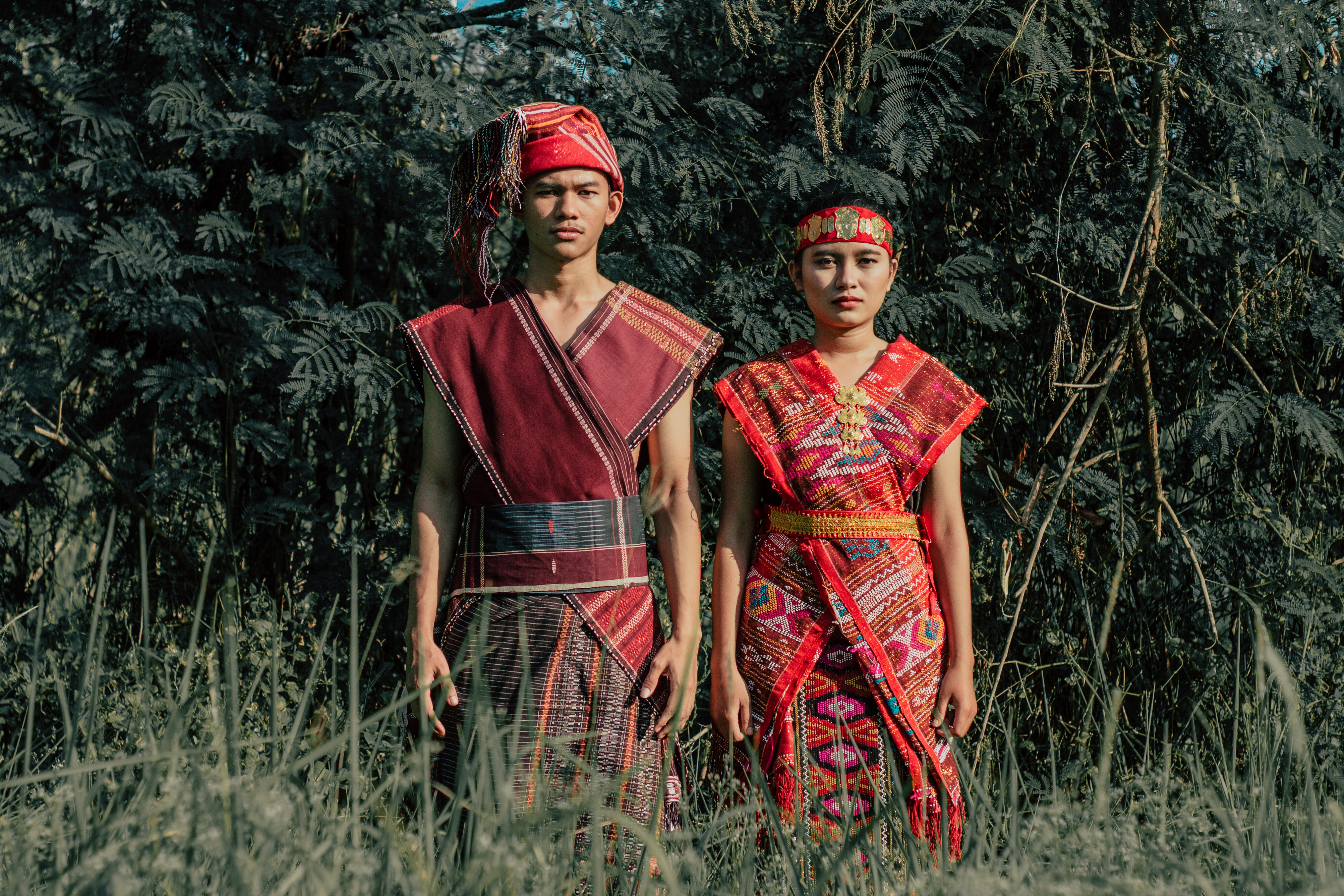|
Pematangsiantar
Pematangsiantar (sometimes written as Pematang Siantar, acronym PS or ''P. Siantar'', colloquially just Siantar), is an independent city in North Sumatra, Indonesia, surrounded by, but not part of, the Simalungun Regency, making Pematangsiantar an enclave within Simalungun Regency. Pematangsiantar formerly had the status of a second level district (''daerah tingkat dua'') and was the administrative centre of the surrounding Regency, but it has recently been elevated to ''Kota'' (City) and separated from the Regency. Its population was 229,525 in the 2005 Intermediate Census, 234,698 in the 2010 Census, 247,219 in the 2015 Intermediate Census, and 268,254 at the 2020 Census.Badan Pusat Statistik, Jakarta, 2021. making it the second largest city in the province after the provincial capital of Medan. Pematangsiantar city, which is only 128 km from Medan and 50 km from Parapat, is often a transit city for tourists who want to go to Lake Toba and Central Tapanuli Regency. As ... [...More Info...] [...Related Items...] OR: [Wikipedia] [Google] [Baidu] |
North Sumatra
North Sumatra ( id, Sumatra Utara) is a province of Indonesia located on the northern part of the island of Sumatra. Its capital and largest city is Medan. North Sumatra is Indonesia's fourth most populous province after West Java, East Java and Central Java, and also the most populous in the island of Sumatra. It covers an area of 72,981 km2. According to the 2020 census, the province's population in that year was 14,799,361. The mid-2021 official estimate is 14,936,148. North Sumatra is a multi-ethnic province. The Malay people are regarded as the natives of the east coast of the province, while the west coast of the province is mainly inhabited by the Batak (''Pakpak'', ''Angkola'' and ''Mandailing'' groups). The central highlands region around Lake Toba is predominantly inhabited by another ''Batak'' groups (''Toba'', ''Simalungun'' and ''Karo''). The Nias people are natives to ''Nias Island'' and its surrounding islets. With the opening of tobacco plantations in ... [...More Info...] [...Related Items...] OR: [Wikipedia] [Google] [Baidu] |
Chinese Indonesian
Chinese Indonesians ( id, Orang Tionghoa Indonesia) and colloquially Chindo or just Tionghoa are Indonesians whose ancestors arrived from China at some stage in the last eight centuries. Chinese people and their Indonesian descendants have lived in the Indonesian archipelago since at least the 13th century. Many came initially as sojourners (temporary residents), intending to return home in their old age. Some, however, stayed in the region as economic migrants. Their population grew rapidly during the colonial period when workers were contracted from their home provinces in Southern China. Discrimination against Chinese Indonesians has occurred since the start of Dutch colonialism in the region, although government policies implemented since 1998 have attempted to redress this. Resentment of ethnic Chinese economic aptitude grew in the 1950s as Native Indonesians, Native Indonesian merchants felt they could not remain competitive. In some cases, government action propagated t ... [...More Info...] [...Related Items...] OR: [Wikipedia] [Google] [Baidu] |
Simalungun
Simalungun Regency is a regency in North Sumatra, Indonesia. Its seat was formerly at Pematangsiantar, but this city was in recent years separated from the Regency and made into an independent city (''kota''), although it remains geographically surrounded by the regency, whose new administrative seat is at Raya. The regency now covers an area of 4,372.5 square kilometres, and at the 2010 census it had a population of 817,720; at the 2020 Census this had risen to 990,246, of whom 497,314 were male and 492,932 were female. Demography The principal group of inhabitants of the Regency (and of Pematangsiantar city, an enclave within the regency) are the Simalungun people, a sub-group of the Batak people. Their language ( Simalungun language) is an Austronesian language. Regent The regent of Simalungun is Radiapoh Hasiholan Sinaga, SH, who was elected as Regent of Simalungun on ''Pilkada'' (election of regional head) 2020. Administrative districts The regency in 2010 was divi ... [...More Info...] [...Related Items...] OR: [Wikipedia] [Google] [Baidu] |
List Of Regencies And Cities Of Indonesia
Regencies (''kabupaten'') and cities (''kota'') are the second-level administrative subdivision in Indonesia, immediately below the provinces, and above the districts. Regencies are roughly equivalent to American counties, although most cities in the United States are below the counties. Following the implementation of decentralization beginning on 1 January 2001, regencies and city municipalities became the key administrative units responsible for providing most governmental services. Each of regencies and cities has their own local government and legislative body. The difference between a regency and a city lies in demography, size, and economy. Generally, a regency comprises a rural area larger than a city, but also often includes various towns. A city usually has non-agricultural economic activities. A regency is headed by a regent (''bupati''), while a city is headed by a mayor (''wali kota''). All regents, mayors, and members of legislatures are directly elected via el ... [...More Info...] [...Related Items...] OR: [Wikipedia] [Google] [Baidu] |
Sumatra
Sumatra is one of the Sunda Islands of western Indonesia. It is the largest island that is fully within Indonesian territory, as well as the sixth-largest island in the world at 473,481 km2 (182,812 mi.2), not including adjacent islands such as the Simeulue, Nias, Mentawai, Enggano, Riau Islands, Bangka Belitung and Krakatoa archipelago. Sumatra is an elongated landmass spanning a diagonal northwest–southeast axis. The Indian Ocean borders the northwest, west, and southwest coasts of Sumatra, with the island chain of Simeulue, Nias, Mentawai, and Enggano off the western coast. In the northeast, the narrow Strait of Malacca separates the island from the Malay Peninsula, which is an extension of the Eurasian continent. In the southeast, the narrow Sunda Strait, containing the Krakatoa Archipelago, separates Sumatra from Java. The northern tip of Sumatra is near the Andaman Islands, while off the southeastern coast lie the islands of Bangka and Belitun ... [...More Info...] [...Related Items...] OR: [Wikipedia] [Google] [Baidu] |
Batak (Indonesia)
Batak is a collective term used to identify a number of closely related Austronesian ethnic groups predominantly found in North Sumatra, Indonesia, who speak Batak languages. The term is used to include the Karo, Pakpak, Simalungun, Toba, Angkola, and Mandailing which are related groups with distinct languages and traditional customs (''adat''). Prehistory Linguistic and archaeological evidence indicates that Austronesian speakers first reached Sumatra from Taiwan and the Philippines through Borneo or Java about 2,500 years ago, and the Batak probably descended from these settlers. While the archaeology of southern Sumatra testifies to the existence of neolithic settlers, it seems that the northern part of Sumatra was settled by agriculturalists at a considerably later stage. Although the Batak are often considered to be isolated peoples thanks to their location inland, away from the influence of seafaring European colonials, there is evidence that they have been in ... [...More Info...] [...Related Items...] OR: [Wikipedia] [Google] [Baidu] |
Indian Indonesian
Indian Indonesians ( id, Orang India Indonesia; ta, இந்திய இந்தோனேசியர்) are Indonesians whose ancestors whose ancestors originally came from the Indian subcontinent. Therefore, this term can be regarded as a blanket term for not only Indonesian Indian proper, but also Indonesians with other South Asian ancestry (e.g. Pakistanis, Bangladeshis etc.). According to the Indian Ministry of External Affairs, there were about 120,000 people of Indian origin as well as 9,000 Indian nationals living and working in Indonesia as of January 2012. Most of them were concentrated in province of North Sumatra and urban areas such as Banda Aceh, Surabaya, Medan and Jakarta. However, it is quite impossible to get correct statistical figures on the Indian Indonesian population, because some of them have merged and assimilated with the indigenous population to become indistinguishable from native Indonesians. History Various people from the Indian subconti ... [...More Info...] [...Related Items...] OR: [Wikipedia] [Google] [Baidu] |
Dutch East Indies
The Dutch East Indies, also known as the Netherlands East Indies ( nl, Nederlands(ch)-Indië; ), was a Dutch colony consisting of what is now Indonesia. It was formed from the nationalised trading posts of the Dutch East India Company, which came under the administration of the Dutch government in 1800. During the 19th century, the Dutch possessions and hegemony expanded, reaching the greatest territorial extent in the early 20th century. The Dutch East Indies was one of the most valuable colonies under European rule, and contributed to Dutch global prominence in spice and cash crop trade in the 19th to early 20th centuries. The colonial social order was based on rigid racial and social structures with a Dutch elite living separate from but linked to their native subjects. The term ''Indonesia'' came into use for the geographical location after 1880. In the early 20th century, local intellectuals began developing the concept of Indonesia as a nation state, and set the ... [...More Info...] [...Related Items...] OR: [Wikipedia] [Google] [Baidu] |
Birmingham Small Arms Company
The Birmingham Small Arms Company Limited (BSA) was a major British industrial combine, a group of businesses manufacturing military and sporting firearms; bicycles; motorcycles; cars; buses and bodies; steel; iron castings; hand, power, and machine tools; coal cleaning and handling plants; sintered metals; and hard chrome process. After the Second World War, BSA did not manage its business well, and a government-organised rescue operation in 1973 led to a takeover of such operations as it still owned. Those few that survived this process disappeared into the ownership of other businesses. History of the BSA industrial group Machine-made guns BSA began in June 1861 in the Gun Quarter, Birmingham, England. It was formed by a group of fourteen gunsmith members of the Birmingham Small Arms Trade Association specifically to manufacture guns by machinery. They were encouraged to do this by the War Office which gave the BSA gunsmiths free access to technical drawings and to the ... [...More Info...] [...Related Items...] OR: [Wikipedia] [Google] [Baidu] |


_en_Tek_Hwa_Seng_bij_Poeloe_Samboe_TMnr_10010680.jpg)




